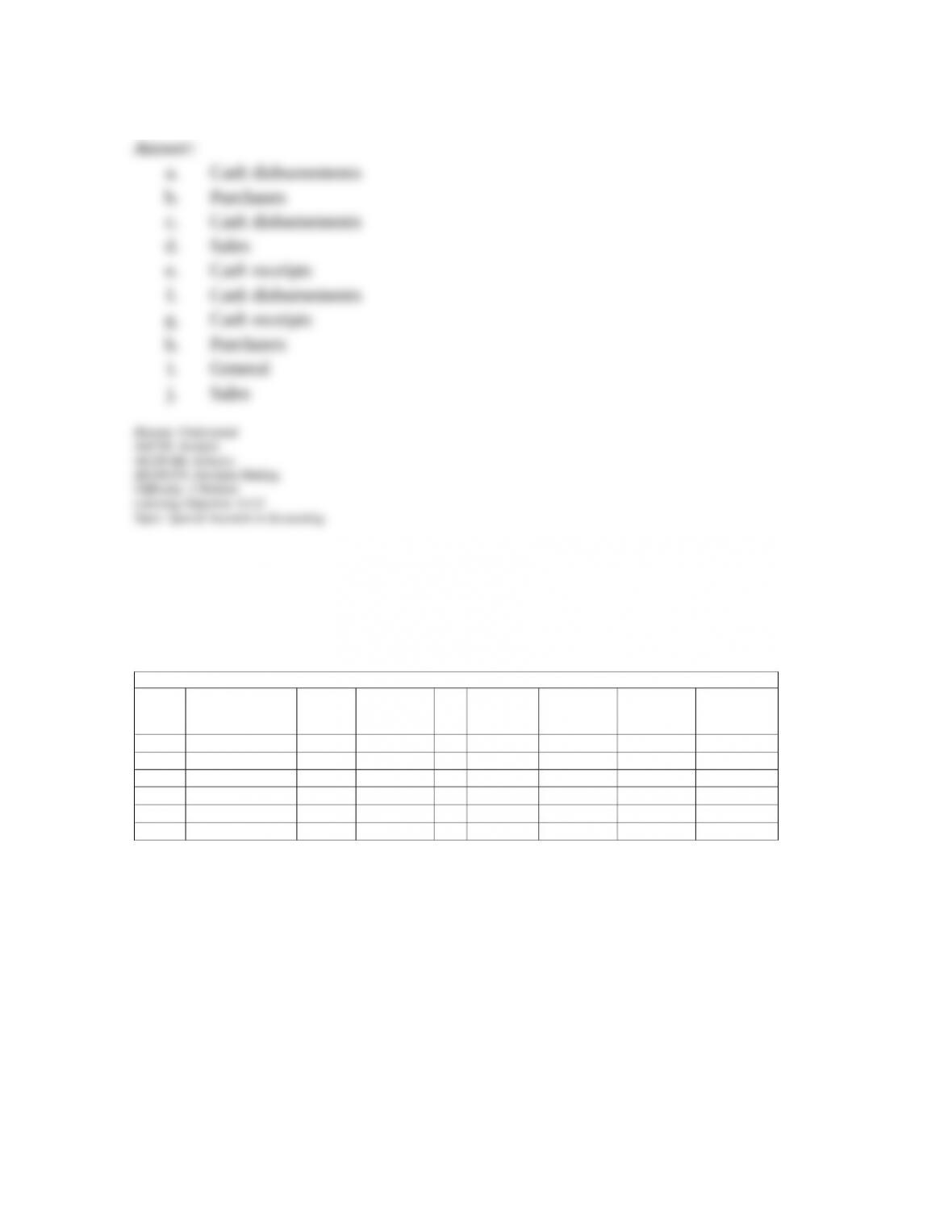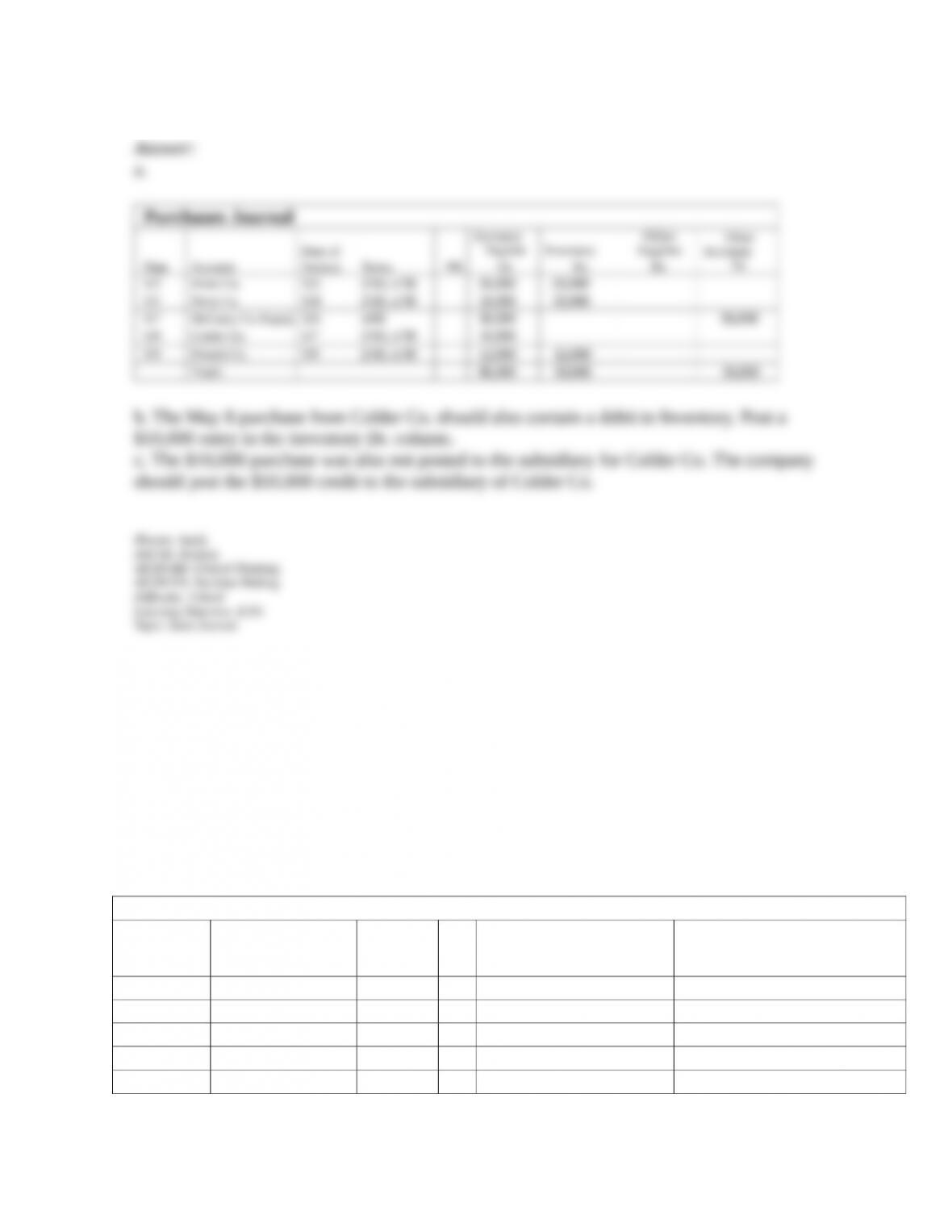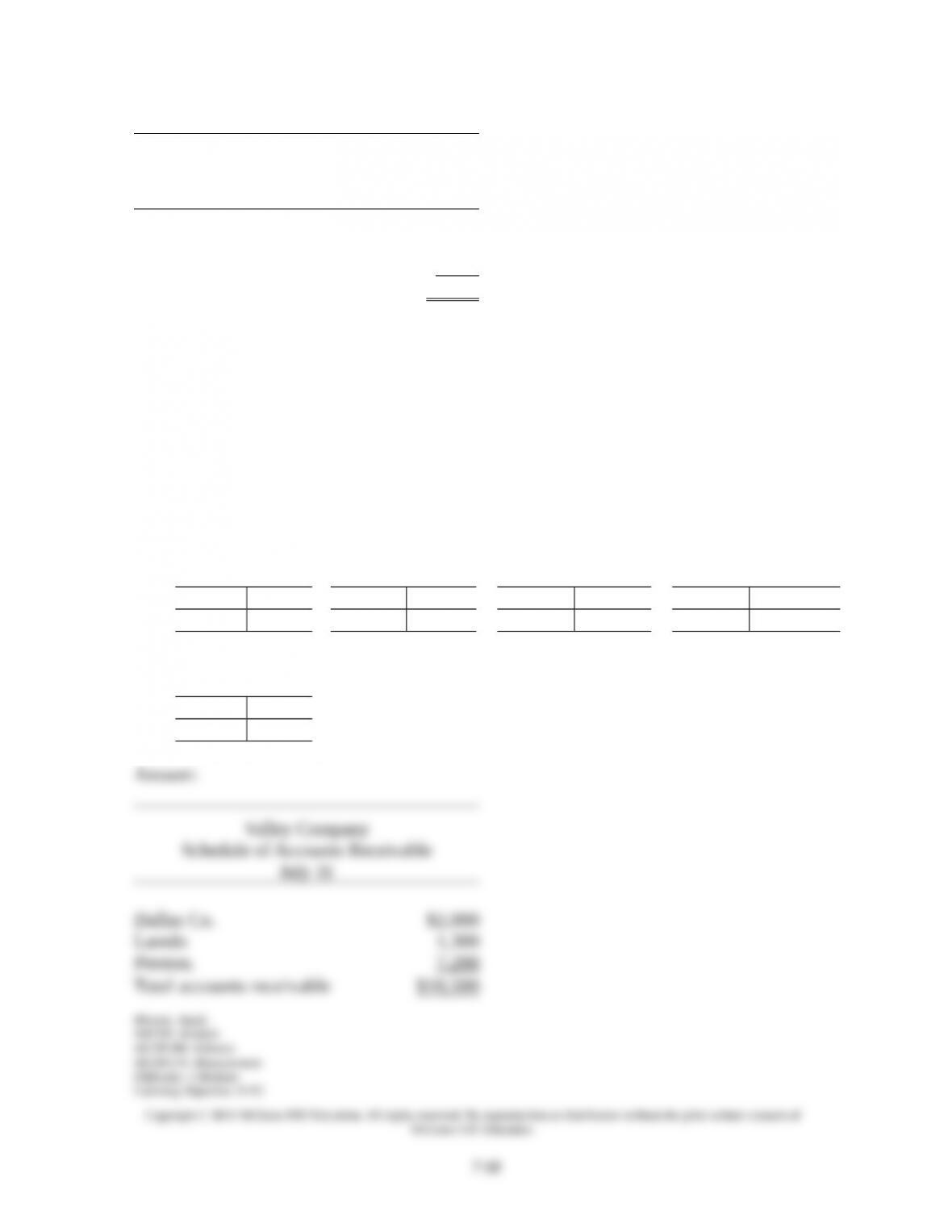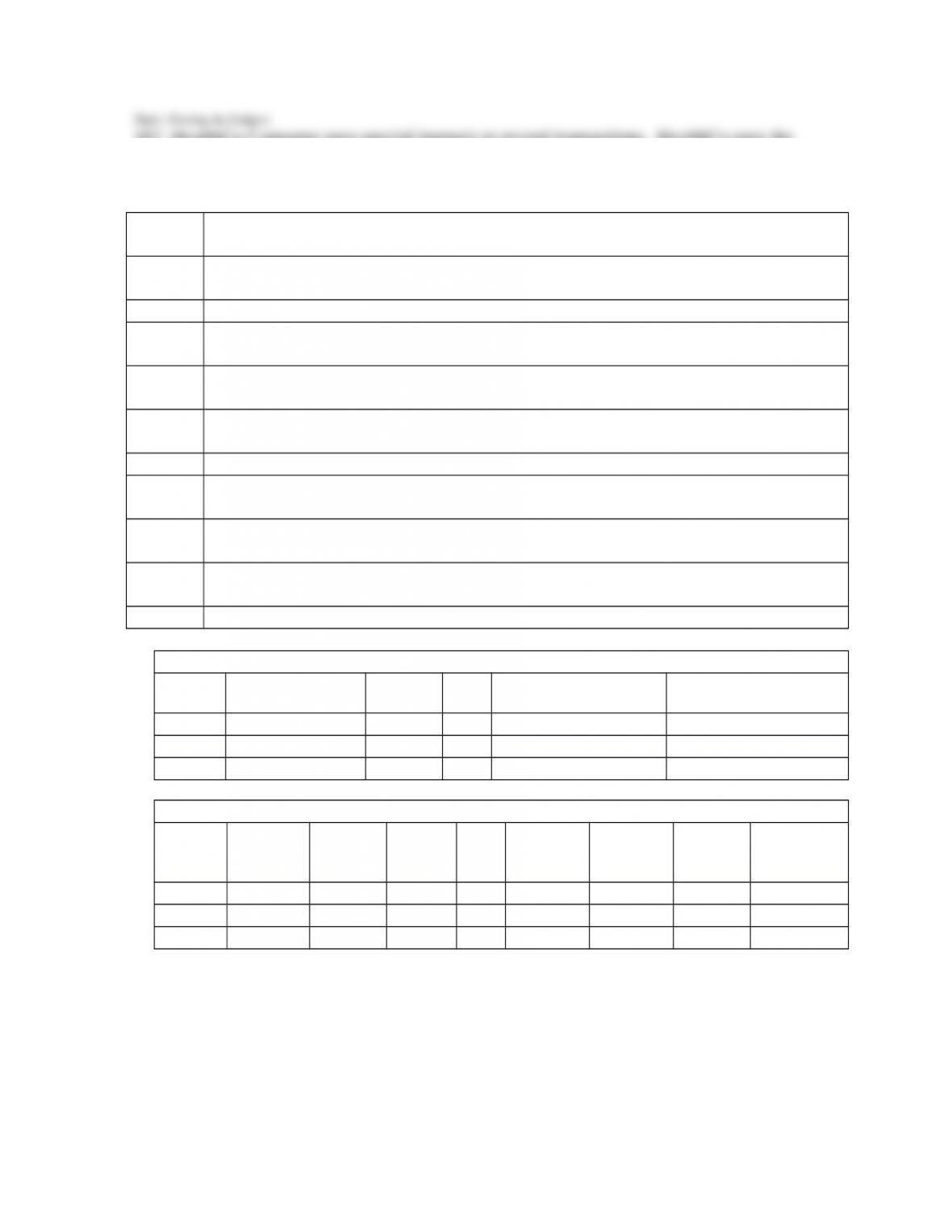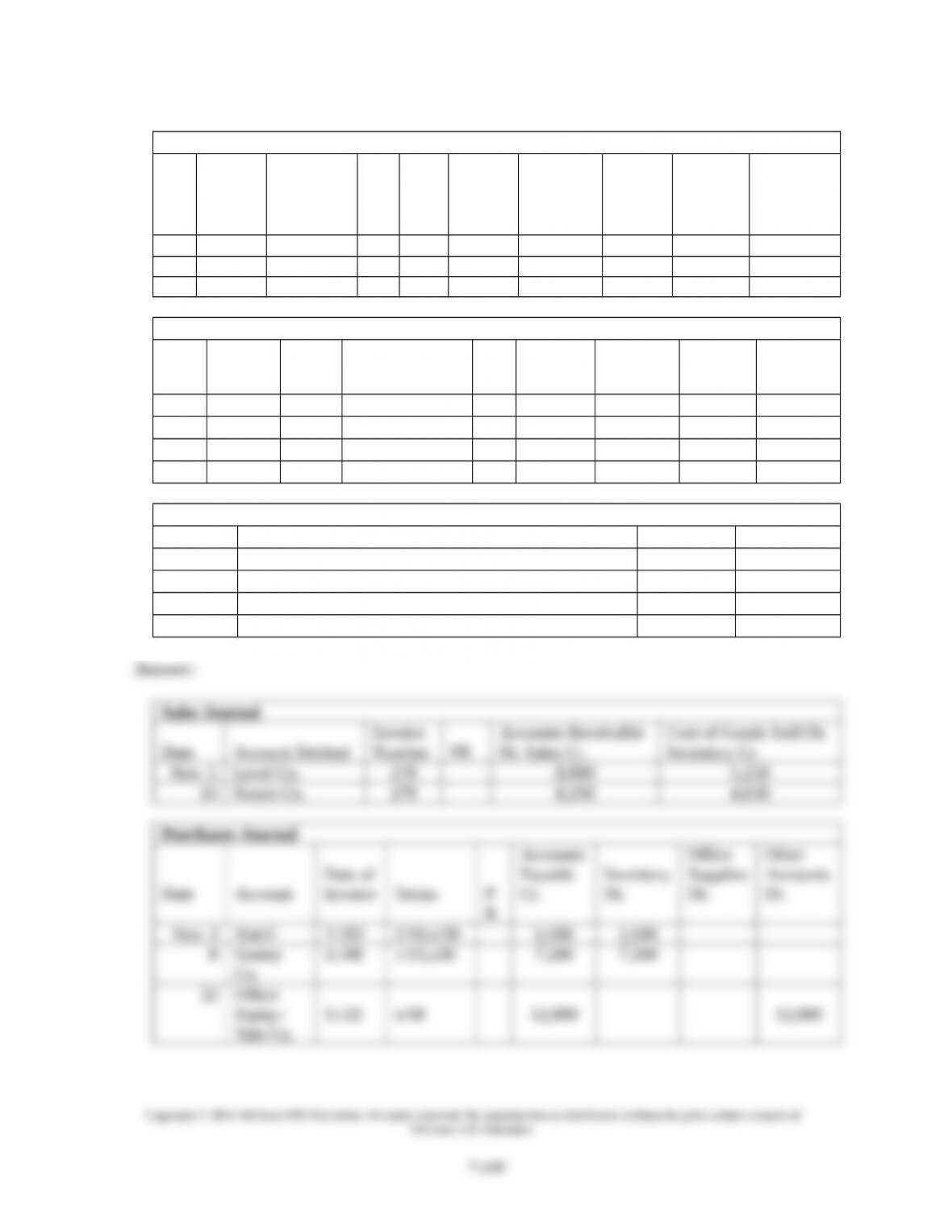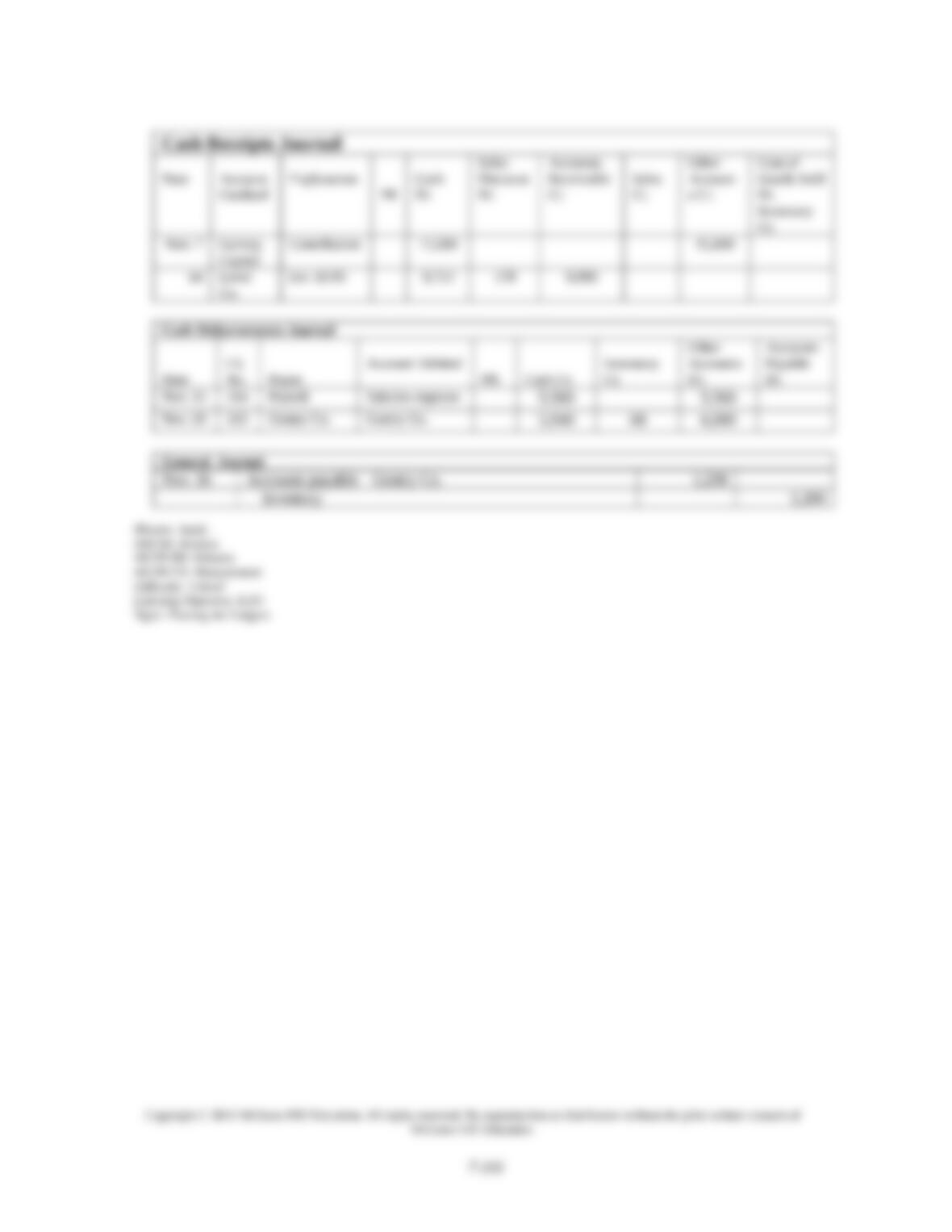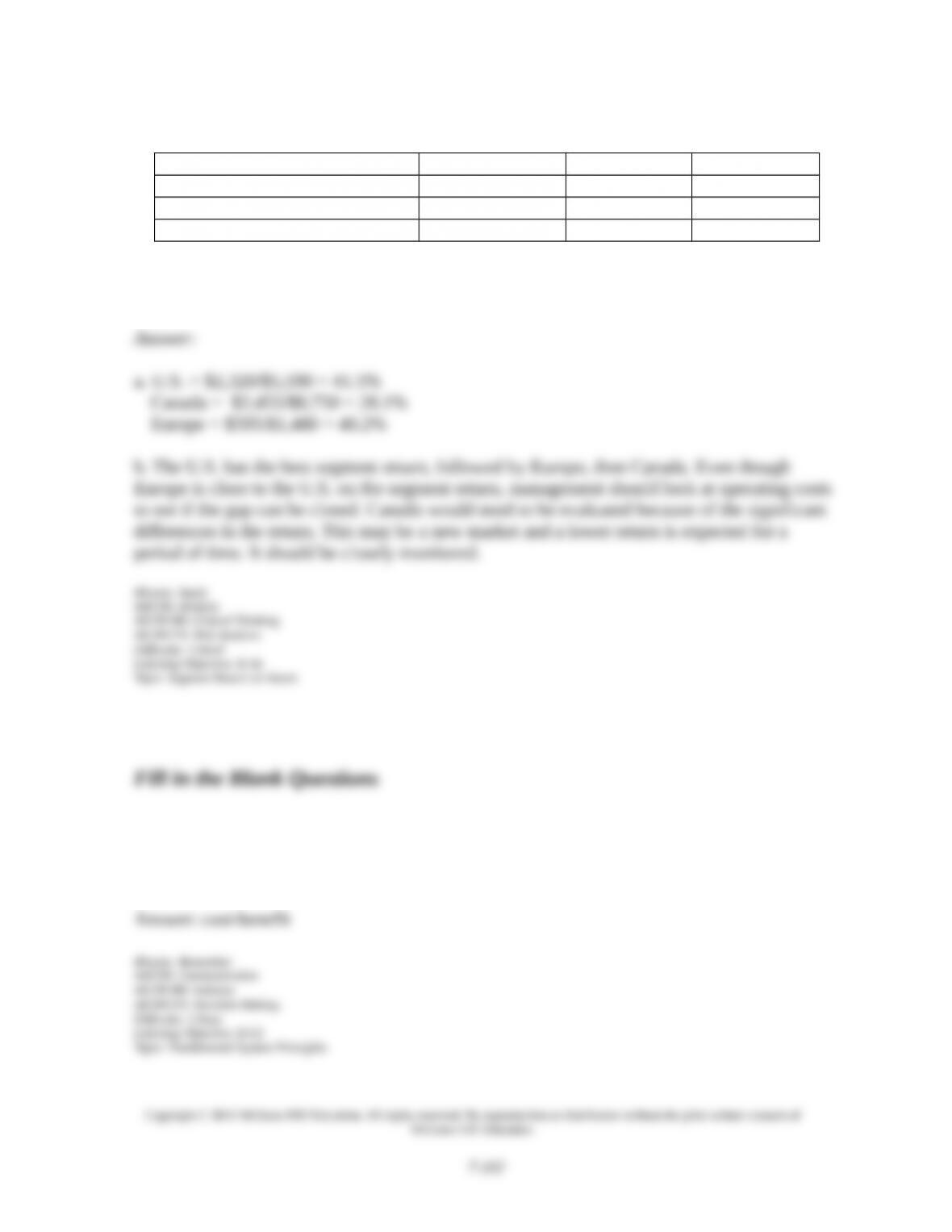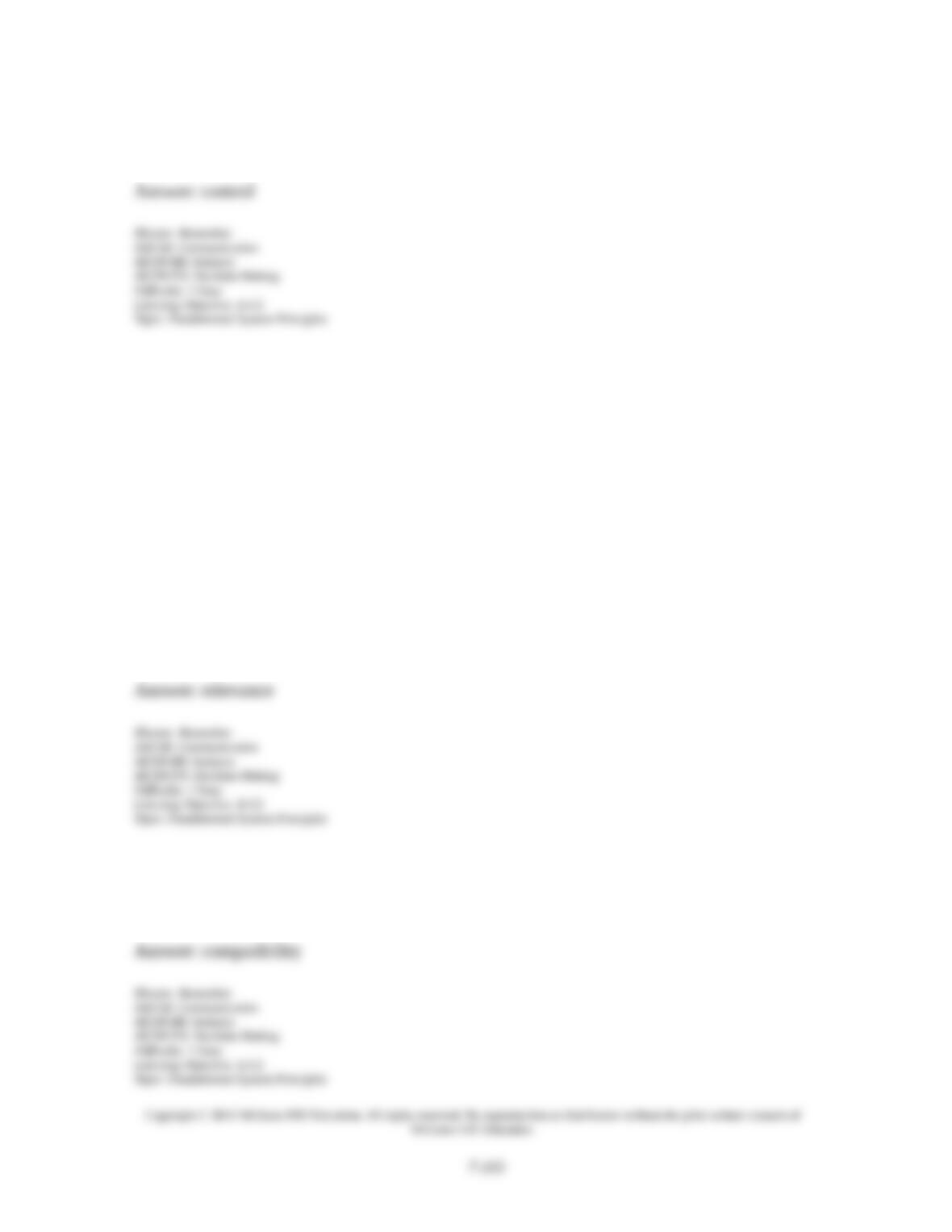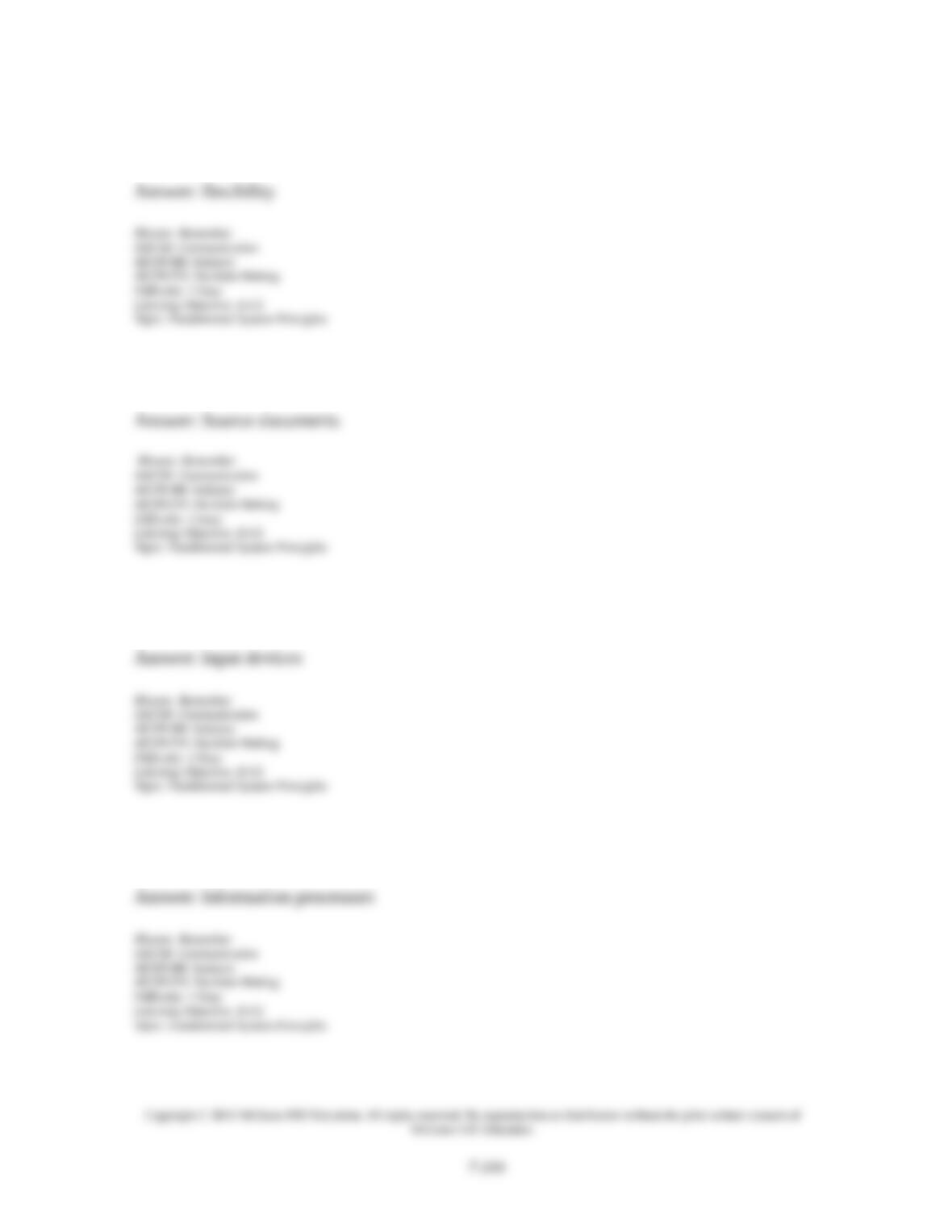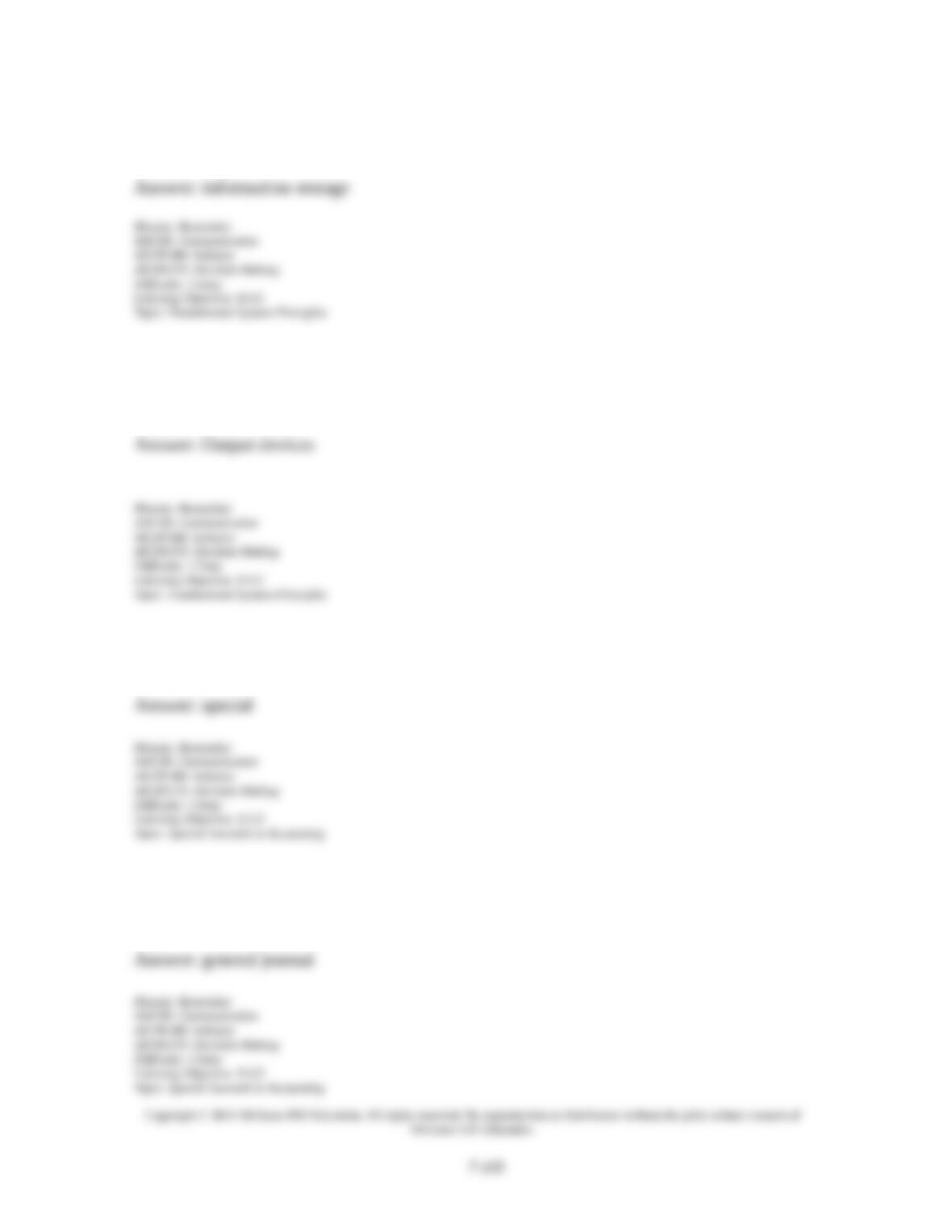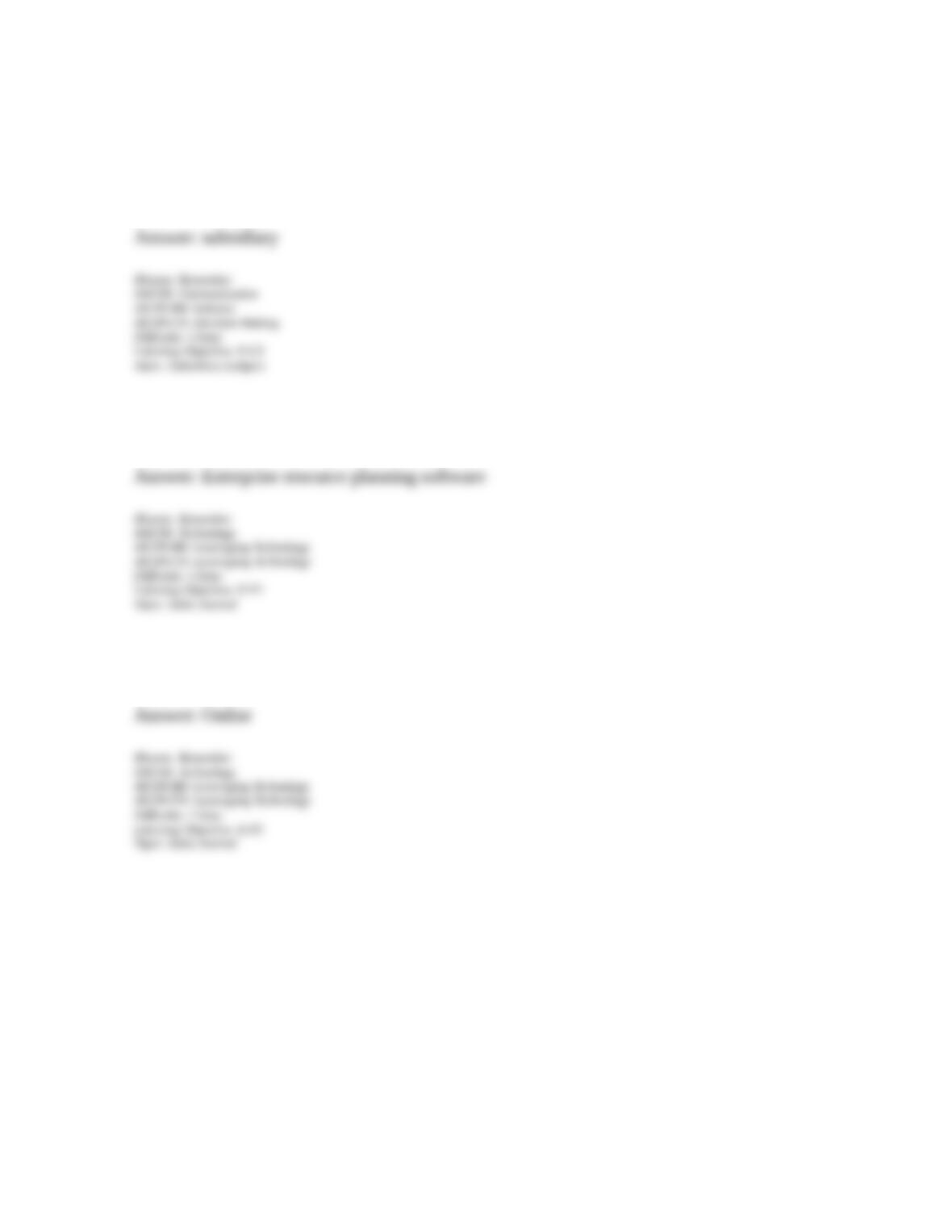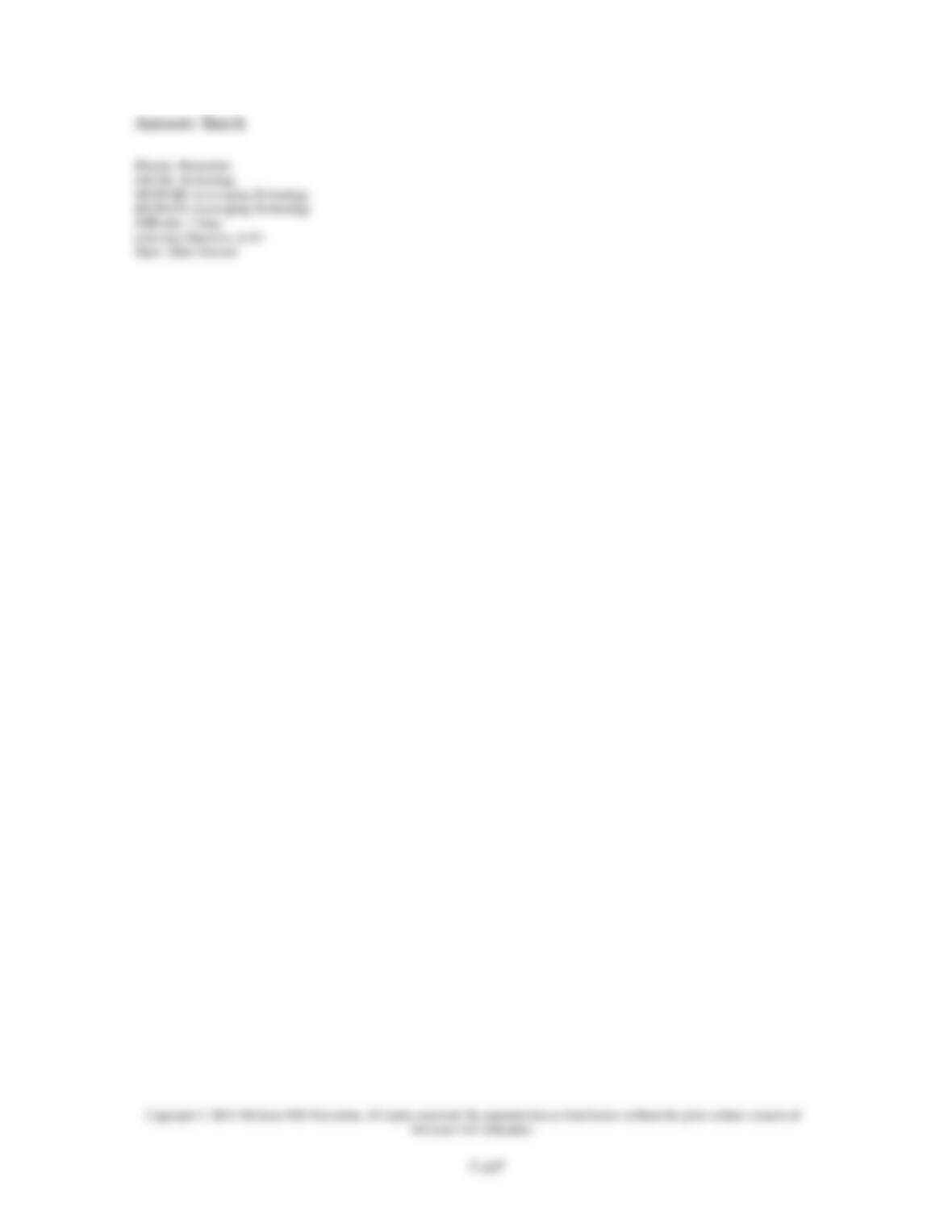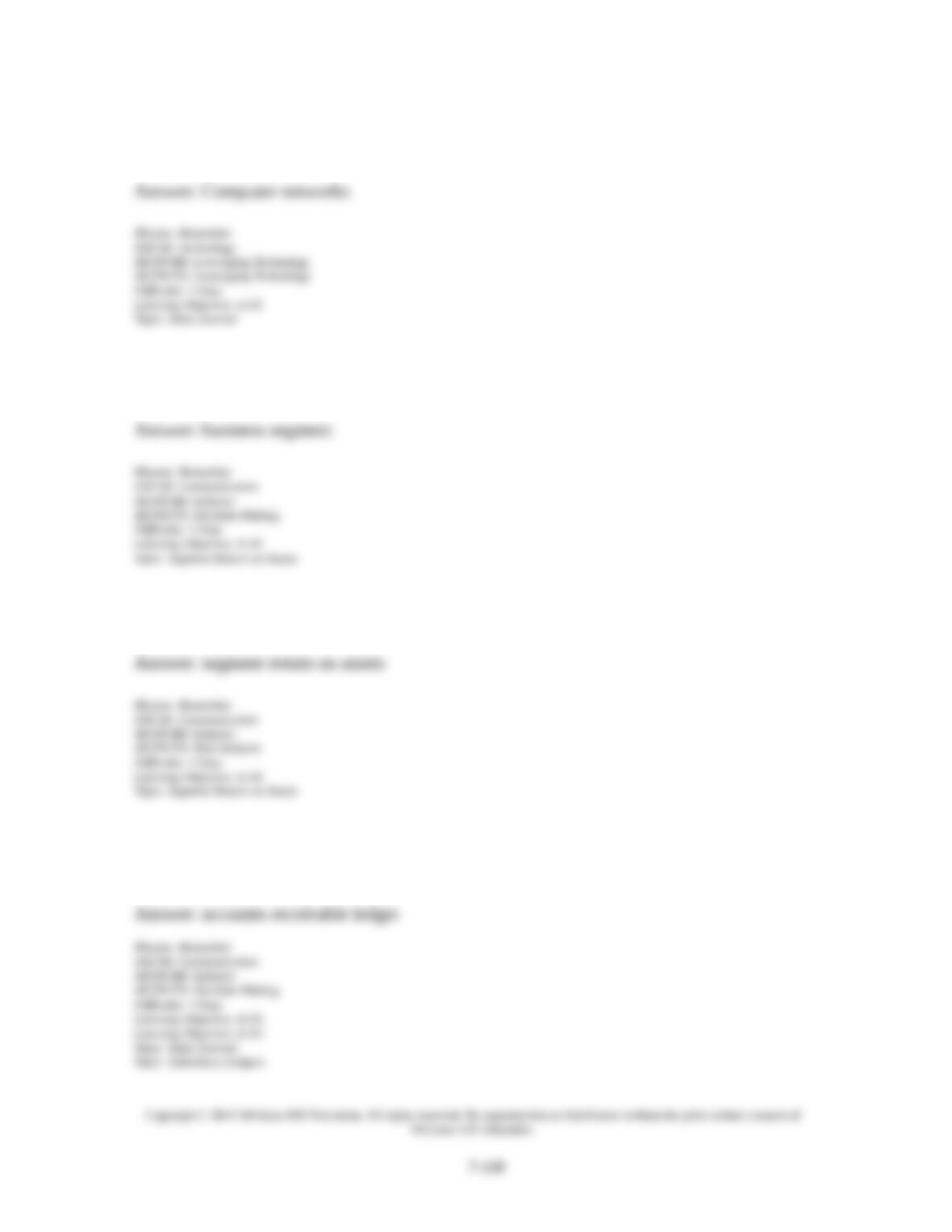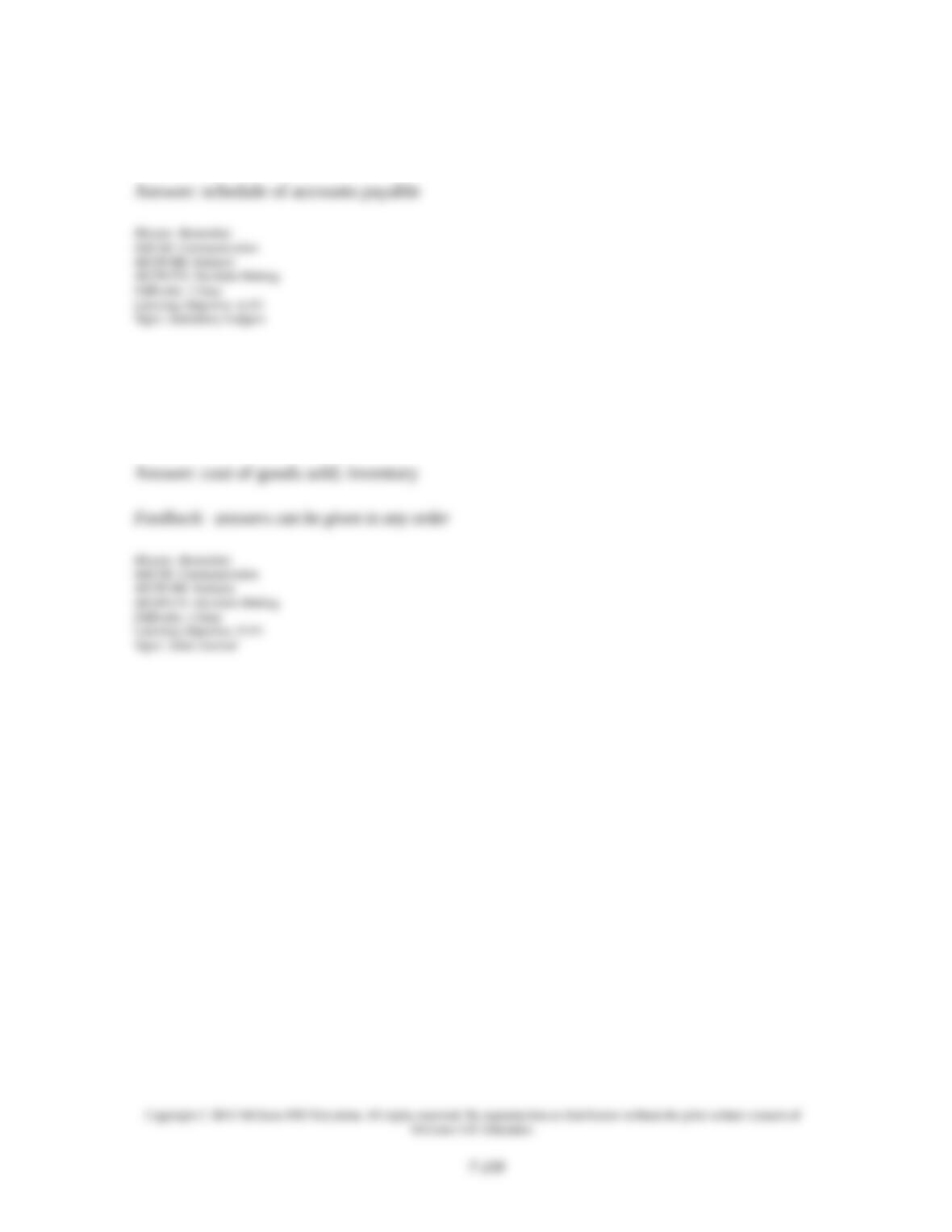120. Maxie’s Game World sold games to a customer on credit for $2,600, terms 1/10, n/30
and the cost of the games was $1,700. When recording the sales transaction in its sales
journal, Maxie’s would enter:
A. $1,700 in the Accounts Receivable Dr./Sales Cr. column and $2,600 in the Cost of Goods
Sold Dr./Inventory Cr. column.
B. $2,600 in the Accounts Receivable Dr./Sales Cr. column and $1,700 in the Accounts
Payable Dr./Purchases Cr. column.
C. $2,600 in the Accounts Receivable Dr./Sales Cr. column and $2,600 in the Cash Cr.
column.
D. $2,600 in the Accounts Receivable Dr./Sales Cr. column and $1,700 in the Cost of Goods
Sold Dr./Inventory Cr. column.
E. $1,700 in the Accounts Receivable Dr./Sales Cr. column and $2,600 in the Other Accounts
column Dr. column.
121. Maxie’s Game World sold games to a customer on credit for $2,600, terms 1/10, n/30
and the cost of the games was $1,700. When recording the collection from the customer made
within the discount period, in its cash receipts journal, Maxie’s would enter:
A. $2,600 in the Cash Dr. column and $2,600 in the Accounts Receivable Cr. column.
B. $2,574 in the Cash Dr. column and $2,574 in the Accounts Receivable Cr. column.
C. $2,574 in the Cash Dr. column, $26 in the Sales Discount Dr. column and $2,600 in the
Accounts Receivable Cr. column.
D. $2,600 in the Accounts Receivable Dr./Sales Cr. column and $2,600 in the Cash Cr.
column.
E. $2,600 in the Cash Dr. column. $2,600 in the Sales Cr. column, and $1,700 in the Cost of
Goods Sold Dr./Inventory Cr. column.

















































































